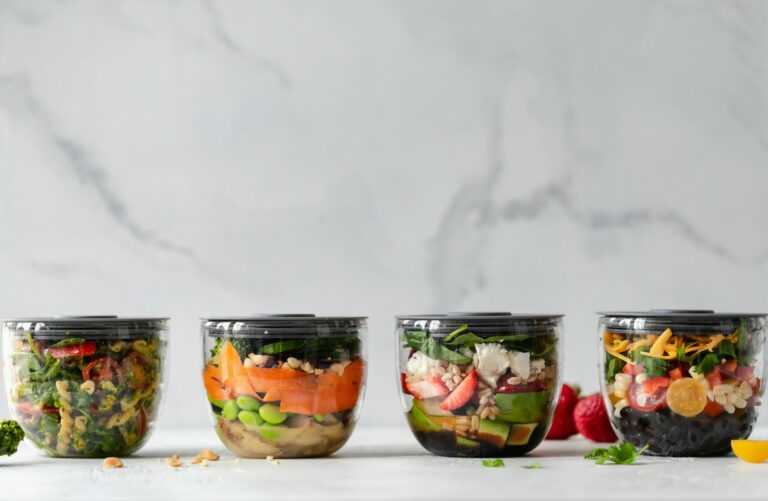Ever find yourself squinting at the label on a store-bought cleaner, wondering what’s actually inside? Switching to non-toxic cleaning isn’t as hard or pricey as it might seem. With a handful of basics like vinegar and baking soda, you can whip up cleaners that do the job—without all the mystery chemicals.
Swapping out harsh cleaners for natural alternatives is an easy way to make your home safer, and honestly, it’s often cheaper too. Vinegar is a solid natural disinfectant and baking soda scrubs without scratching. These two are pretty much the backbone of most DIY cleaning recipes.
Starting this non-toxic journey can feel a bit daunting, but you don’t need to overhaul everything at once. Many folks just pick one room or swap one product at a time. This beginner’s approach to green cleaning is a lot more doable and helps you stick with it, rather than burning out.
Why Switch to Non-Toxic Cleaning
Lots of cleaning products out there have chemicals that aren’t great for your health (or the planet, for that matter). Non-toxic options help keep your home clean and fresh without those risks.
The Risks of Harmful Chemicals
Traditional cleaners can sneak in some pretty nasty stuff. Many contain volatile organic compounds (VOCs) that end up in the air you breathe.
Products like bleach and ammonia-based sprays can cause:
- Headaches, dizziness, or eye irritation
- Skin irritation if you touch them
- Breathing issues or even asthma flare-ups
Some cleaners have endocrine disruptors like phthalates and parabens, which can mess with hormones and potentially cause reproductive or developmental problems.
There are even cleaning ingredients out there that are known carcinogens—yikes. These can get into your system through your skin or just by breathing them in.
Indoor air pollution from these chemicals can actually be worse than what’s outside, since everything gets trapped inside.
Benefits for Health and Home
Switching to non-toxic cleaning can make a real difference in your home’s air quality. The change is especially helpful for kids and pets, who are more sensitive to chemicals because they:
- Breathe faster than adults
- Have bodies that are still developing
- Spend more time on floors where residues gather
- Put hands and toys in their mouths
Natural cleaners are usually gentler on your skin, too. If you’re someone who hates wearing gloves, that’s a plus.
A lot of people notice fewer allergy symptoms after making the switch. Some even say they sleep better once they ditch the chemical cleaners—maybe it’s just easier to breathe at night.
Environmental Impact and Greenwashing
Those chemicals you rinse down the drain don’t just disappear. They end up in rivers and lakes, affecting fish and other wildlife.
Biodegradable cleaners break down naturally, so they’re less likely to mess with local water, animals, or plants.
But watch out for greenwashing—companies love to slap “natural” or “green” on a label, even when it doesn’t mean much. Look for real certifications and ingredient lists.
The best eco-friendly products usually have:
- Full ingredient lists
- Certifications like Green Seal or EcoLogo
- Minimal or recyclable packaging
- Plant-based ingredients, not petroleum stuff
When you choose genuinely non-toxic brands, you’re basically voting with your wallet for safer products.
Essential Ingredients and Tools for Non-Toxic Cleaning
You don’t need a ton of fancy stuff to clean without chemicals. A few simple ingredients and some basic tools will get you pretty far.
Must-Have Natural Ingredients
White vinegar is kind of a cleaning MVP. It cuts grease, gets rid of smells, and disinfects. Keep a spray bottle with half vinegar, half water on hand for most jobs.
Baking soda is your friend for scrubbing sinks, tubs, and counters. It’s gritty enough to clean, but gentle on surfaces. Sprinkle it on carpets before vacuuming for a quick refresh.
Castile soap (like Dr. Bronner’s) is super versatile. Use it for dishes, floors, laundry—just about anything. It’s concentrated, so you don’t need much.
Lemon juice is a natural disinfectant and deodorizer. It’s great for greasy messes and stains.
Hydrogen peroxide is a gentle bleach alternative. It kills bacteria and tackles tough stains without the harshness.
Choosing Safe Cleaning Supplies
If you’re buying ready-made cleaners, look for plant-based ingredients. Skip anything with artificial fragrances, phthalates, or parabens.
An all-purpose concentrate like Branch Basics is handy. It replaces a bunch of products, saves money, and cuts down on plastic.
Skip these:
- Products labeled “danger,” “poison,” or “warning”
- Anything with chlorine bleach or ammonia
- Air fresheners with synthetic scents
Look for:
- Full ingredient lists
- Unscented or naturally scented options
- Real certifications (EPA Safer Choice, MADE SAFE)
DIY cleaners are easy to make and let you control what goes in them. Plus, it’s usually cheaper.
Assembling a Beginner’s Cleaning Toolkit
Basics for non-toxic cleaning:
- Microfiber cloths (wash and reuse them)
- Natural bristle brushes
- Spray bottles for your homemade mixes
- Glass jars for storing powders or pastes
- Mop with washable heads
An air purifier with a HEPA filter can help clear out stuff in the air that cleaning stirs up.
A simple caddy keeps your tools together and makes cleaning less of a hassle.
Don’t forget to replace worn-out brushes or cloths—they don’t work as well and can actually hold onto bacteria. Also, it helps to wash microfiber cloths separately to keep them effective.
Label homemade cleaners with what’s inside and when you made them. It saves a lot of guessing later.
How to Identify Non-Toxic Cleaning Products
It can be tricky to tell which products are actually non-toxic, but there are a few things you can check to make it easier.
Understanding Ingredient Lists
Always read the label. Products should list all their ingredients. If you see vague stuff like “fragrance,” that’s a red flag.
Ingredients to avoid:
- Phthalates and parabens
- Ammonia, chlorine bleach
- Formaldehyde
- Glycol ethers
- Artificial fragrances
- Triclosan
Instead, look for plant-based surfactants made from things like coconut or corn. Simple ingredients—vinegar, baking soda, essential oils—are good signs.
Don’t be fooled by “green” or “natural” if there’s no info to back it up.
Third-Party Certifications and Labels
Certifications make life easier when you’re shopping for safer cleaning products. Trusted ones include:
- EWG Verified – Checked for health concerns by the Environmental Working Group
- Green Seal – Focuses on health and environmental standards
- EPA Safer Choice – Government label for safer ingredients
- USDA Certified Biobased – Made from renewable sources
- Cradle to Cradle – Looks at material health and environmental impact
Check out the EWG verified cleaning products list if you want some ideas. Look for “biodegradable” or “phthalate-free” on the label too.
DIY Non-Toxic Cleaning Recipes and Routines
Making your own cleaners is simple and saves money. Most recipes use ingredients you probably already have.
Simple Homemade Cleaning Recipes
For a solid all-purpose cleaner, mix equal parts white vinegar and water in a spray bottle. Throw in 10 drops of lemon essential oil if you like a fresh scent.
To tackle the bathroom, combine 1 cup each of baking soda, washing soda, and borax with a grated bar of castile soap. This powder is great for tubs and sinks.
For kitchen messes, try 1/2 cup salt, 1/4 cup washing soda, and 1 cup baking soda with a few drops of lemon essential oil for a scrubbing mix.
Glass cleaner is easy: mix 1 part vinegar to 4 parts water. Use a microfiber cloth for streak-free shine.
Building an Effective Cleaning Routine
Do a quick daily wipe-down of spots like counters, sinks, and doorknobs. It keeps things from getting out of hand.
Try a simple weekly schedule, such as:
- Monday: Bathrooms
- Wednesday: Kitchen deep clean
- Friday: Dusting and floors
Keep your homemade cleaners in labeled bottles where you use them most. It’s less hassle that way.
Set a timer for 15-20 minutes when you clean. It’s easier to stay on track, and small regular sessions beat occasional all-day cleaning marathons.
After cleaning, rinse spray bottles, wash cloths, and let brushes dry so they don’t get musty.
Frequently Asked Questions
If you’re just starting out, you probably have a few questions. Here are some quick answers to help you get going.
What are the essential ingredients to make homemade non-toxic cleaning products?
You don’t need a lot. White vinegar, baking soda, and castile soap cover most cleaning jobs.
Lemon juice is great for grease and adds a clean scent. Hydrogen peroxide works well as a disinfectant in bathrooms.
A few drops of essential oils like tea tree, lavender, or lemon add a nice smell and have some antimicrobial benefits. Usually, 10-15 drops per batch is plenty.
Salt and borax are good for scrubbing tough spots. With these basics in your cupboard, you’re set for most cleaning tasks.
How can I identify and choose the best non-toxic cleaning products on the market?
Look for products with full ingredient lists, not vague stuff like “natural fragrance.” Terms like “non-toxic” and “biodegradable” aren’t regulated, so don’t just trust the label.
Check for third-party certifications like EPA Safer Choice, Green Seal, or EWG Verified—these actually mean something.
Avoid anything with “fragrance” or “parfum” on the label, since those can hide a lot of chemicals. Products without phthalates, parabens, or artificial dyes are usually safer.
Start simple, with a good multi-purpose cleaner, before buying a bunch of specialty products. It’ll save you money while you figure out what works for you.
What are the top natural cleaning product brands available today?
Seventh Generation has a pretty big lineup of plant-based cleaners for just about every area in the house. You can usually spot their stuff in most grocery aisles or find it online without much hassle.
Homecourt offers plant-based options that actually work and skip the harsh chemicals. Plus, their scents are natural and, honestly, kind of refreshing.
Method is hard to miss—they’ve got those sleek bottles and scents that don’t smell like old lemons. Their range covers all-purpose sprays, laundry detergents, and more.
If you’re still hunting for your favorite, Ecover, Mrs. Meyer’s Clean Day, and Biokleen are also worth a shot. Each brand has its own vibe and scent, so you might want to try a few to see what fits your style.
What are the effective natural alternatives to traditional disinfectants?
Hydrogen peroxide (just the regular 3% kind) is a solid pick for disinfecting most surfaces. Just spray it on, leave it for about 10 minutes, and then wipe it off—pretty straightforward.
White vinegar is another go-to. It knocks out a lot of germs on hard surfaces and works especially well in kitchens and bathrooms. Just skip it if you’ve got marble or stone counters.
Tea tree oil is naturally antimicrobial—add about 20 drops to 2 cups of water in a spray bottle, and you’ve got a simple germ-fighter.
For laundry, tossing in half a cup of borax helps with odors and bacteria. And if you can, hanging clothes in the sun works wonders for freshening things up.
How can beginners incorporate non-toxic cleaning practices into their daily routine?
Start with one swap at a time—maybe switch out your all-purpose cleaner first, then move on from there. It’s less overwhelming that way.
Try making a quick daily habit of wiping down high-touch spots with a vinegar solution. Save the deeper cleaning with specialty natural products for once a week.
Keep some pre-mixed cleaners in labeled spray bottles so they’re ready to grab. It’s just easier to stick with non-toxic stuff when it’s right there.
If you want something super simple, mix 1 part vinegar with 3 parts water and a few drops of dish soap. This all-purpose cleaner handles most day-to-day messes without much fuss.
What are the key differences between conventional cleaning products and non-toxic ones?
Conventional products often contain ammonia and synthetic fragrances, which can be tough on your skin, eyes, and even your lungs sometimes. Non-toxic options usually stick to plant-based ingredients, so they’re a bit easier on your body.
Traditional cleaners? They can leave behind chemical residues that keep releasing volatile organic compounds (VOCs) into the air at home. Natural products, on the other hand, generally avoid those lingering, harmful leftovers.
Another thing—most conventional cleaners come in plastic bottles filled with harsh chemicals. A lot of non-toxic brands are trying to do better here, offering concentrated refills or packaging made from recycled stuff. It’s not perfect, but it’s a step.
And let’s be honest: the scents. Non-toxic cleaners usually smell a lot milder and more natural, while the conventional ones can be overpowering and artificial. If strong smells tend to bother your breathing, that’s something to think about.




